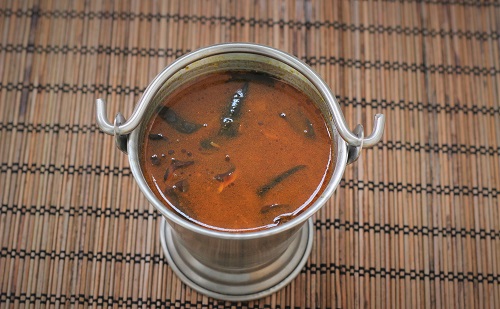Looking at sacrifice and gender dynamics in food through the lens of recipes.
This article was published in Whetstone South Asia on 1st April, 2021. You can read the comeplete article here –> whetsonemagazine.com .
In Tamil, the word ‘summa’ means just like that, for no reason. Summa (or chumma as it is also pronounced colloquially) has been my go-to response for questions that never really had defined answers. I may even have slipped the word into my English conversations, for lack of a better expression to convey the absence of ambition or intent. Summa really packs a punch when you want to emphasise that there is nothing more to it. I have met many a summas in everyday life, but I never imagined that I would encounter one in the nomenclature of a recipe.
While meandering through the YouTube food world, I came across a video by the south Indian cookbook author and television personality, Revathy Shanmugam. Seated in her garden, Shanmugam is seen cooking using earthenware pots on an open fire. She introduces her audience to two recipes: gramathu kootu — a rustic, village-style lentil and vegetable stew, and a summa kuzhambu — a watery yet punchy gravy made with onions and tomatoes.
Why would a dish exist for no reason, I found myself wondering. Luckily, Shanmugam delves into the origins of this kuzhambu a few minutes into her video. “This is a popular dish from the Chettinad region,” she explains in Tamil. Known for its robust culinary heritage and the spacious mansions that dot its landscape, Chettinad is located in the south Indian state of Tamil Nadu.
Shanmugam takes her viewers into the kitchens of Chettinad and shares that the summa kuzhambu was a quick-fix side dish that women made for themselves. A secret indulgence, you would think. Not really. When the main accompaniment for a breakfast of idlis was polished off by the menfolk in the family, the women quickly sauteed onions and tomatoes, and added tamarind water, spices and garlic (you must have garlic to make this kuzhambu, insists Shanmugam) to make a flavour-packed dish that they could generously dip their idlis into. A recipe without vegetables, using what is always available — just like that!
A quick Google search reveals that the summa kuzhambu has now joined the annals of foods that are made when time is of the essence. Several written accounts also mention that the kuzhambu is given to women after childbirth. One blogger writes about how this recipe, seemingly churned out of thin air, speaks to the culinary prowess of the women from the Chettinad region.
Even though the summa kuzhambu has cemented its place in Chettinad cuisine, I find myself thinking about its origins. Although it is widely lauded for its ingenuity, it is impossible to miss the fact that it was created as a result of sacrifices women made on the table.
Head over to https://www.whetstonemagazine.com/south-asia-journal/behind-recipes-of-convenience-is-a-story-of-sacrifice for the complete story.
